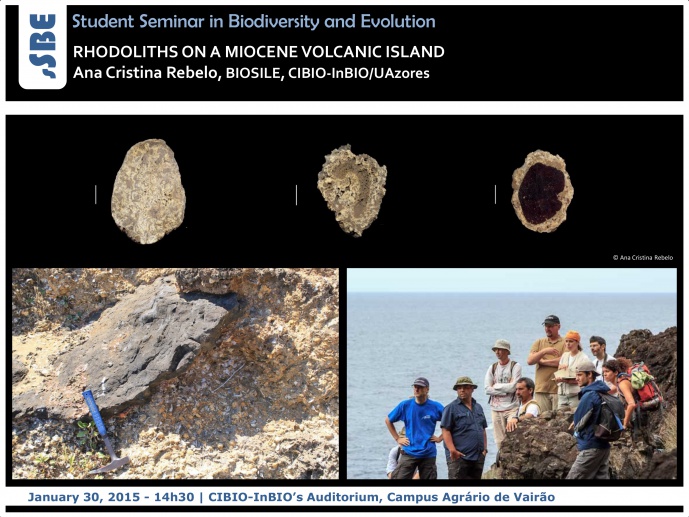RHODOLITHS ON A MIOCENE VOLCANIC ISLAND

STUDENT SEMINAR IN BIODIVERSITY AND EVOLUTION

Rhodoliths are the response of Coralline algae to unstable substrates (Fig. 1); their calcified structures preserve well and may, after death, be incorporated into sediments, providing insights into geological processes. Despite being widely distributed, studies on the distribution and ecology of extant and fossil rhodoliths are few and, as a consequence, rhodoliths are still poorly understood.
The ongoing research in the Azores will provide more insight on why those islands are so different from others in Macaronesia with respect to rhodolith deposits in the geological record and the general lack of coastal rhodolith deposits today (Figs. 2 and 3).
Ana Cristina Rebelo has a degree in Biology (2008) by the University of Azores and a Masters degree in Geology (2010) by the University of Lisbon. She is currently doing a PhD at CIBIO-InBIO/Azores, at the University of the Azores, entitled "Miocene Rhodoliths of the Atlantic Archipelagos (Azores, Madeira, Canaries and Cape Verde): Systematics, Palaeoecology and Palaeobiogeography", under the supervision of Sérgio P. Ávila. The PhD is being done in cooperation with the Natural History Museum in Stuttgart (Germany), under the supervision of Michael W. Rasser.
Image credits: Ana Cristina Rebelo
Figure legends
Fig. 1. Interior of Miocene rhodoliths. A - Non-nucleated rhodolith. B - Rhodolith with shell nucleus. C - Rhodolith with volcanic nucleus.
Fig. 2. Miocene rhodolith bed with volcanic intrusion.
Fig. 3. Palaeontologists studying the fossiliferous outcrop.